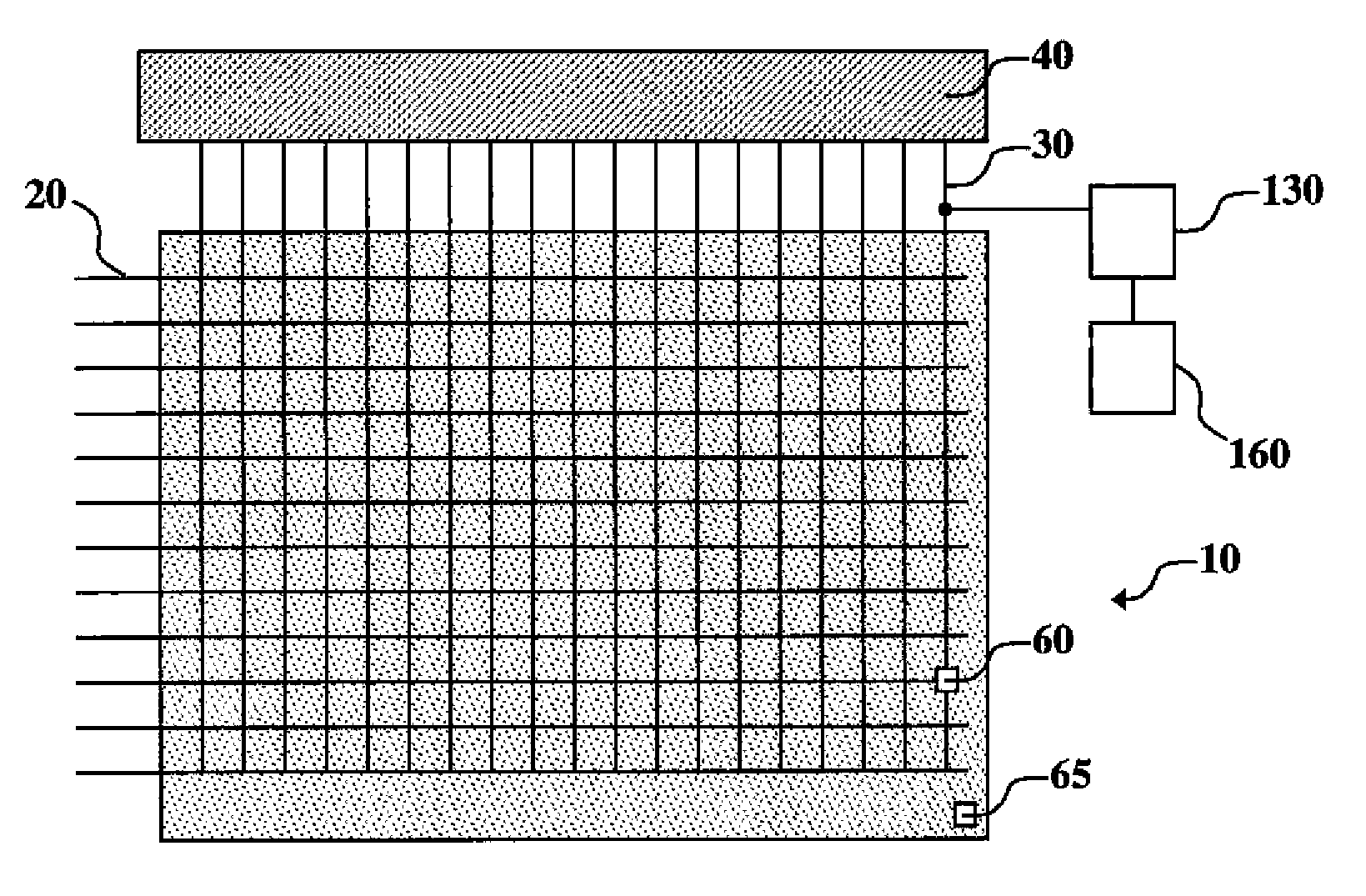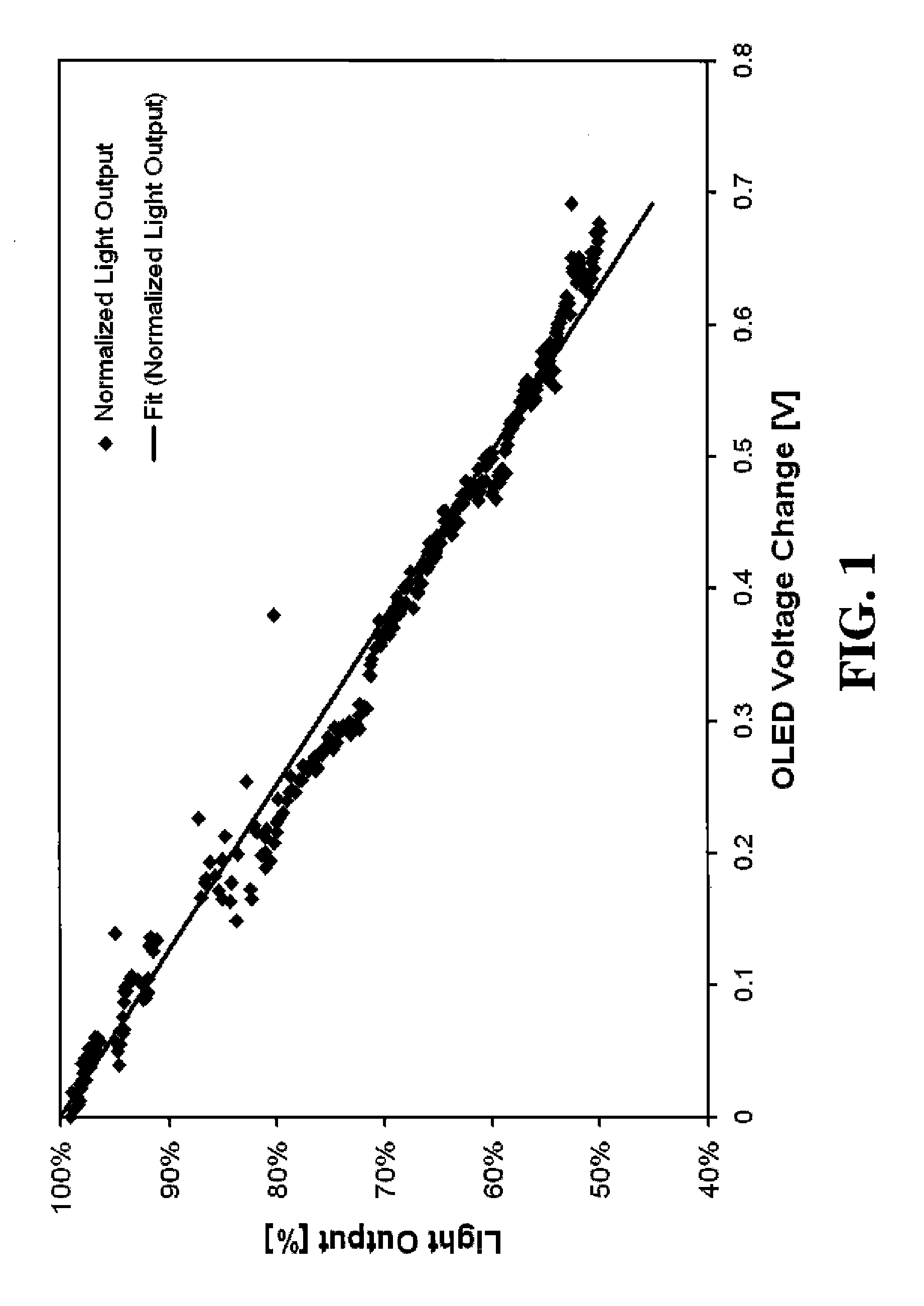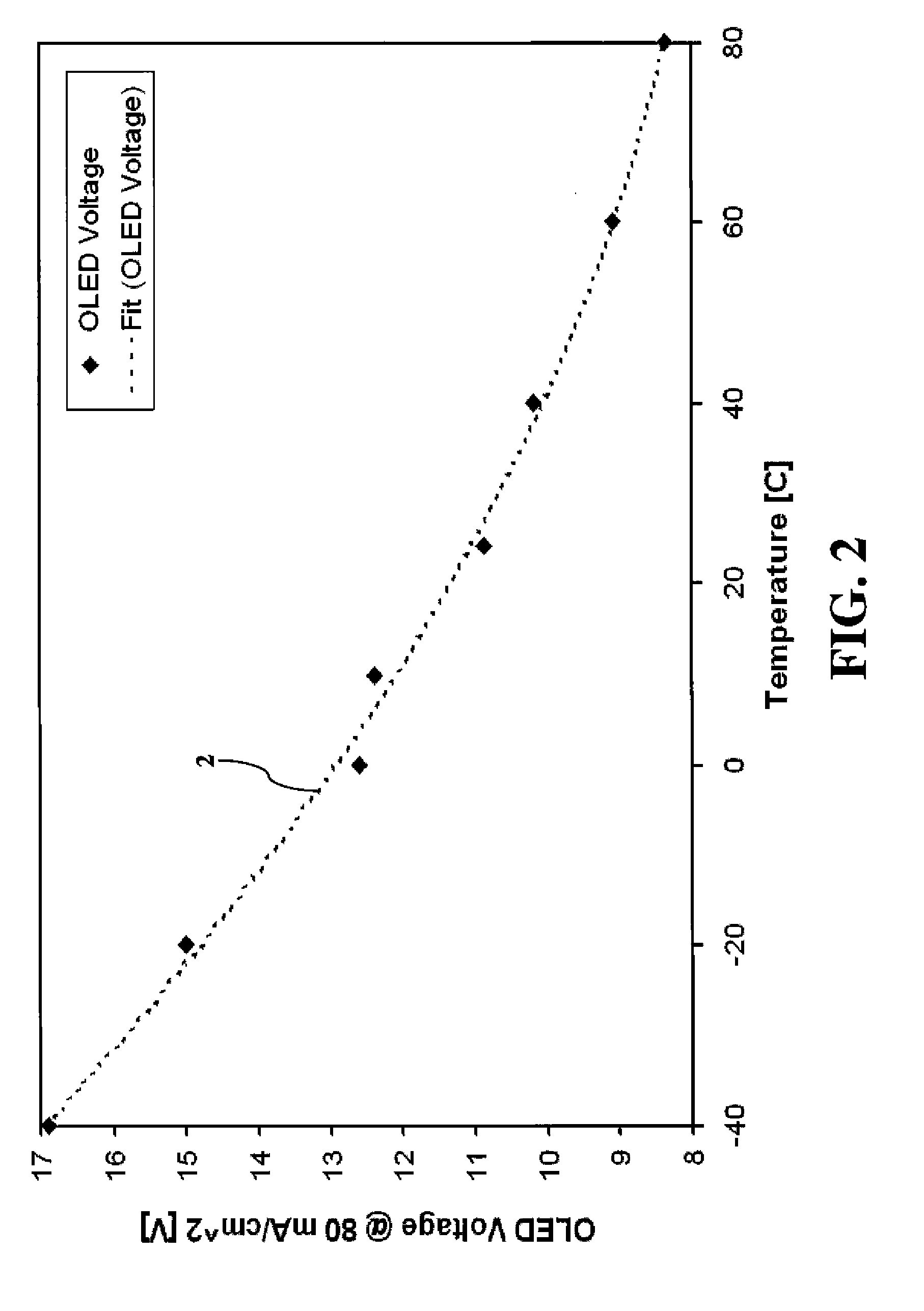Digital-drive electroluminescent display with aging compensation
a digital drive and electroluminescent display technology, applied in the direction of instruments, static indicating devices, etc., can solve the problems of organic light-emitting materials in the display age, less efficient light-emitting, and unfavorable uniformity, and achieve accurate compensation and simple voltage measurement circuitry
- Summary
- Abstract
- Description
- Claims
- Application Information
AI Technical Summary
Benefits of technology
Problems solved by technology
Method used
Image
Examples
Embodiment Construction
[0040]Characteristics of an EL emitter include its efficiency, typically expressed in cd / A or as a percentage of a reference cd / A value, and its resistance, which relates to the voltage across the emitter for a given current. Referring to FIG. 1, there is shown a representative relationship between efficiency and ΔVOLED for an OLED emitter. In this figure, variations in the characteristics of the EL emitter, e.g. efficiency, are caused by aging of the EL emitter, measured by ΔVOLED. The relationship has been experimentally determined to be approximately independent of fade current density. By measuring the luminance decrease and its relationship to ΔVOLED with a given current, a change in corrected signal necessary to cause an EL emitter to output a nominal luminance can be determined. This measurement can be done on a model system and thereafter stored in a lookup table or used as an algorithm.
[0041]Turning now to FIG. 2, there is shown an example of the relationship between OLED e...
PUM
 Login to View More
Login to View More Abstract
Description
Claims
Application Information
 Login to View More
Login to View More - R&D
- Intellectual Property
- Life Sciences
- Materials
- Tech Scout
- Unparalleled Data Quality
- Higher Quality Content
- 60% Fewer Hallucinations
Browse by: Latest US Patents, China's latest patents, Technical Efficacy Thesaurus, Application Domain, Technology Topic, Popular Technical Reports.
© 2025 PatSnap. All rights reserved.Legal|Privacy policy|Modern Slavery Act Transparency Statement|Sitemap|About US| Contact US: help@patsnap.com



